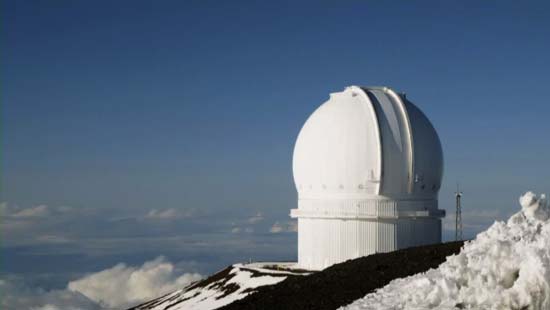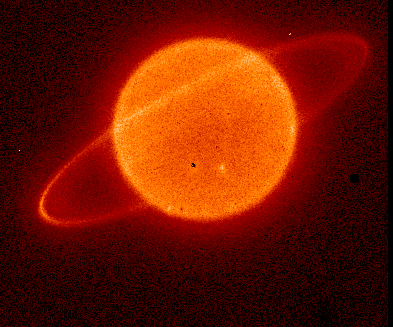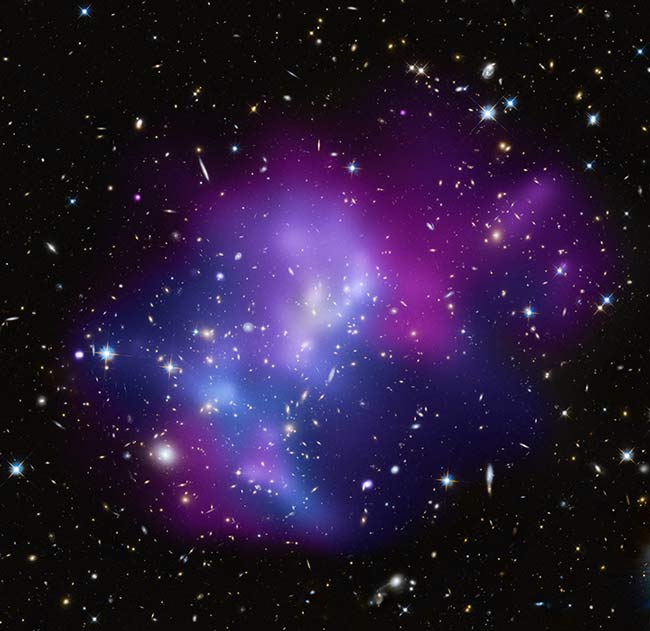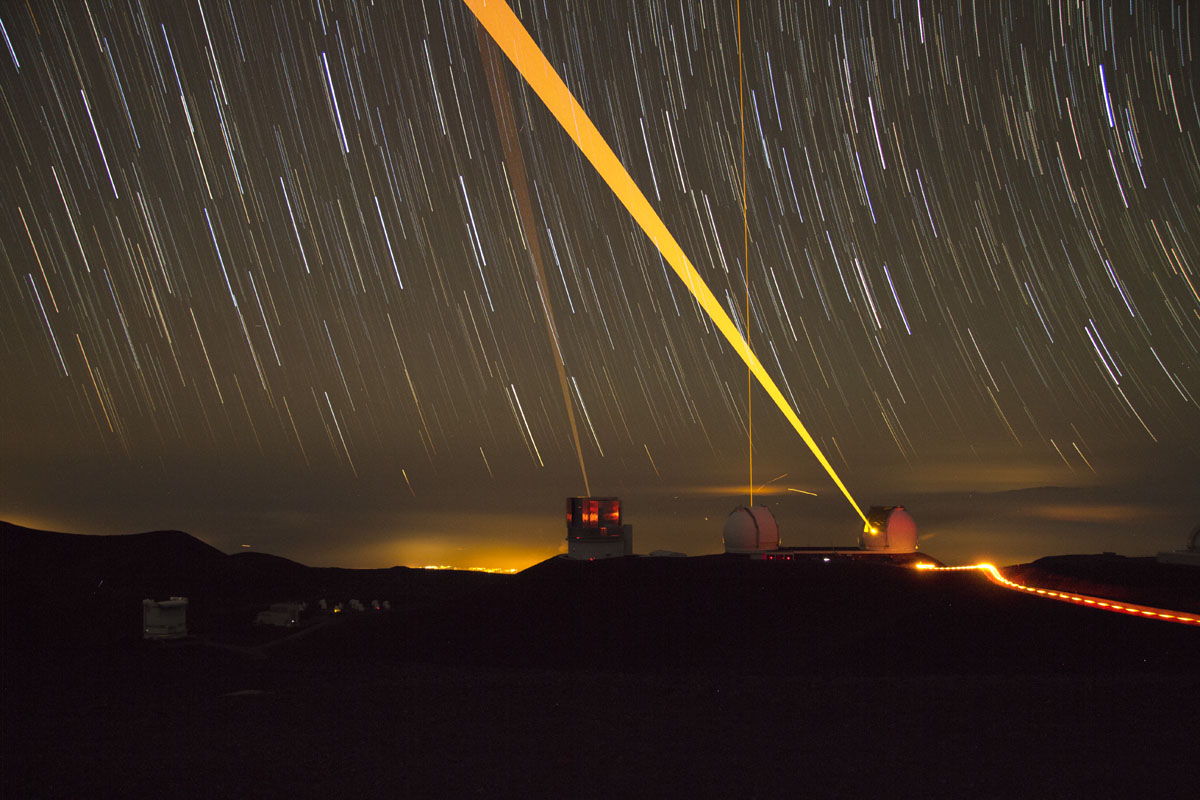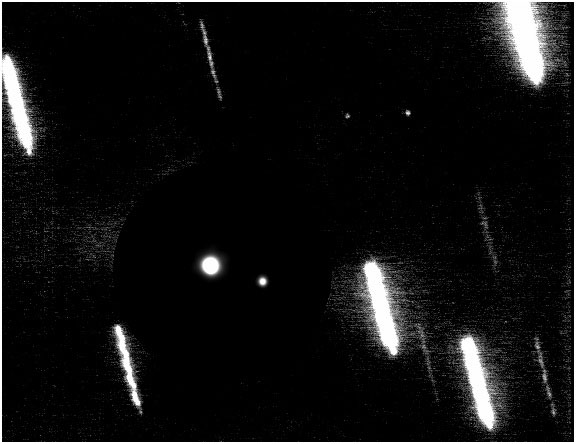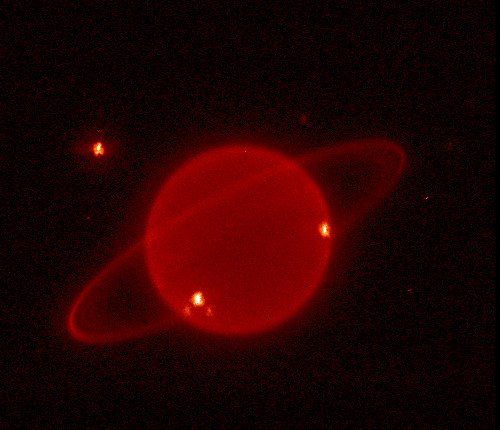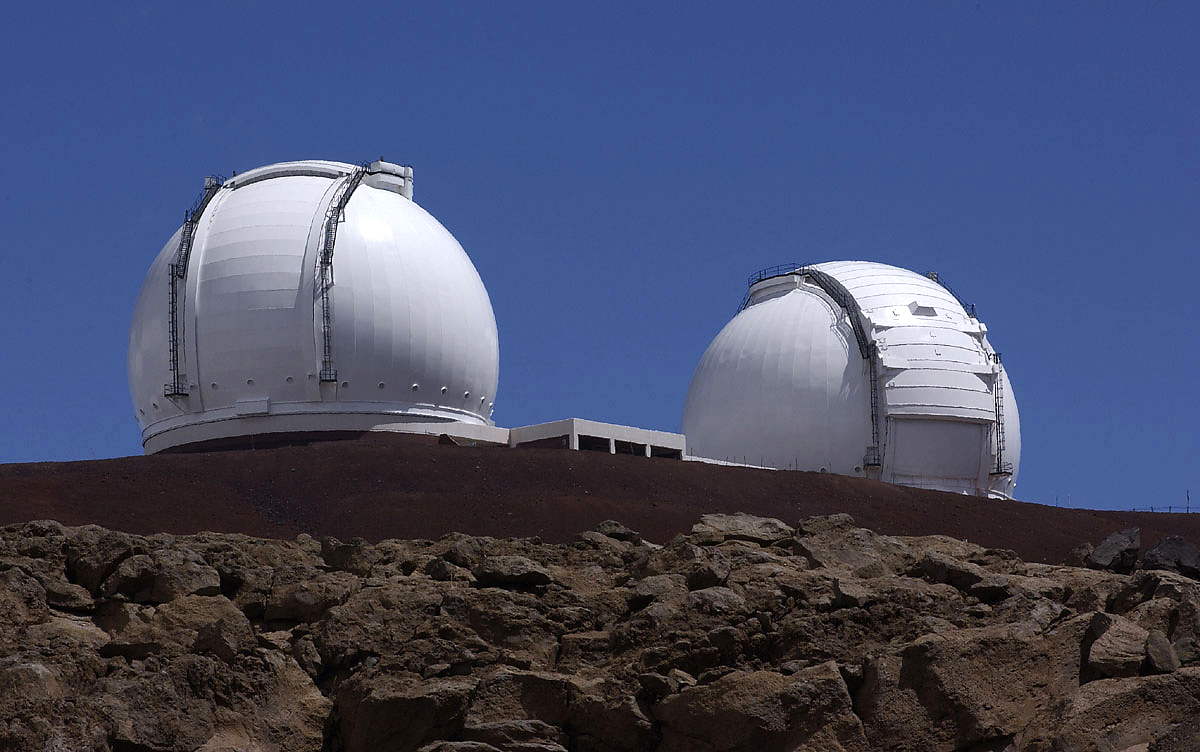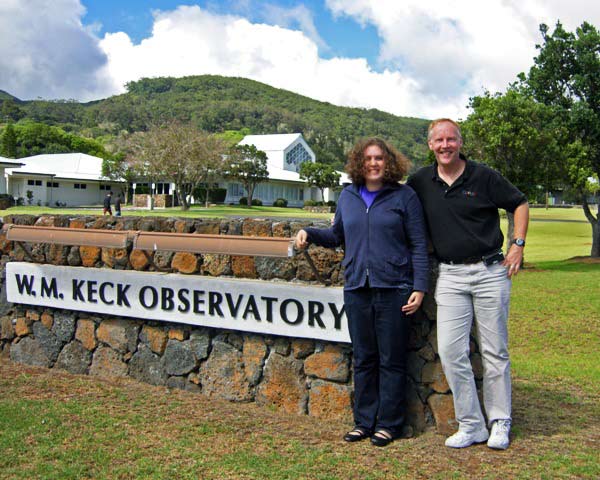Keck Observatory: Cosmic Photos from Hawaii's Mauna Kea
Keck I and II Domes at Sunset
Photo of the Keck I and II domes at sunset, used as cover art for the award-winning DVD "The Kecks of Mauna Kea."
Keck Observatory
Exactly how big is our universe, and what place do we have in it? Come explore the Keck Observatory, where the human mind is opened to a vast realm of new possibilities.
Uranus and Its Rings
An infrared shot of Uranus and its rings, taken by astronomer Mike Brown using the adaptive optics system at Hawaii's Keck Observatory.
NASA Spots Most Crowded Space Collision Ever
The most crowded collision of galaxy clusters has been identified by combining information from NASA's Chandra X-ray Observatory, Hubble Space Telescope and the Keck Observatory on Mauna Kea, Hawaii. The system MACSJ0717.5+3745 (or MACSJ0717 for short) is located about 5.4 billion light years from Earth.
Neptune in Infrared Light
A shot of faraway Neptune in infrared light, captured using the adaptive optics system at Hawaii's Keck Observatory.
Morning Light on Twin Domes of Keck Observatory
The pre-dawn glow lights up the twin Keck domes moments before the shutters close the domes for the day.
Three Lasers and Light Pollution
The Keck I Laser propagating, alongside the Keck II and Subaru lasers. WMKO Engineer Andrew Cooper took over 90 x 1minute exposures from near UKIRT on the summit ridge on May 26. The result has been combined into the attached image and a video. The image combines 23 exposures, each 1 minute long. During the exposure, the Keck II laser is aimed over the camera at the Milky Way's Galactic Center. The image also shows a car driving down the summit road which appears as a stream of light.
Breaking space news, the latest updates on rocket launches, skywatching events and more!
New Portrait Made of Pluto and Its Moons
An image of the Pluto system taken with the one of the ground-based Keck telescopes in Hawaii. The Pluto system moved with respect to the background stars during the one hour of observations, leaving the stars trailed in this image.
Uranus and Moon Miranda in Infrared Light
A view of Uranus in infrared light, captured by Hawaii's Keck Observatory. The moon Miranda is to the upper left of Uranus, and the moon Puck is a faint smudge to the upper right. The bright splotches on Uranus' disk are clouds.
Keck Telescopes in Hawaii
The nearly 14,000-foot summit of Mauna Kea on Hawaii’s Big Island is home to some of the largest astronomical telescopes in the world, including Keck Observatory’s twin 10-meter reflectors (housed inside the white domes pictured above).
Crossing the Ring Plane of Uranus
Dr. Mark Showalter and student Bekki Dawson visited Keck Observatory in 2007 to observe the Uranian ring plane crossing, when Earth crossed the ring plane of Uranus.

Space.com is the premier source of space exploration, innovation and astronomy news, chronicling (and celebrating) humanity's ongoing expansion across the final frontier. Originally founded in 1999, Space.com is, and always has been, the passion of writers and editors who are space fans and also trained journalists. Our current news team consists of Editor-in-Chief Tariq Malik; Editor Hanneke Weitering, Senior Space Writer Mike Wall; Senior Writer Meghan Bartels; Senior Writer Chelsea Gohd, Senior Writer Tereza Pultarova and Staff Writer Alexander Cox, focusing on e-commerce. Senior Producer Steve Spaleta oversees our space videos, with Diana Whitcroft as our Social Media Editor.

